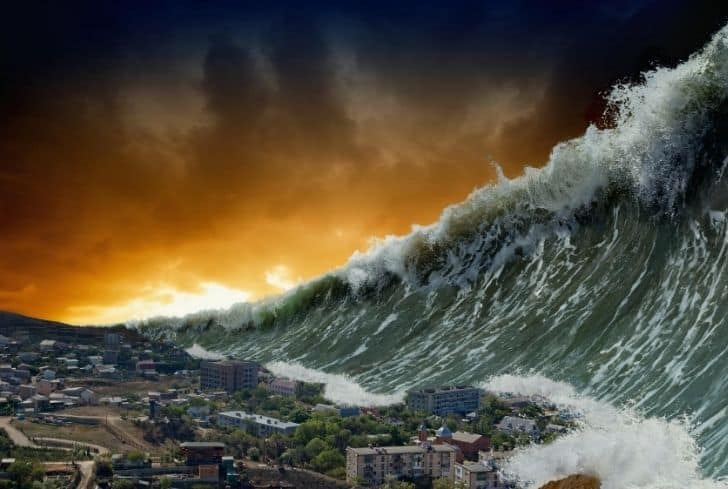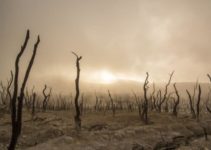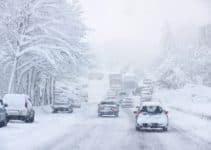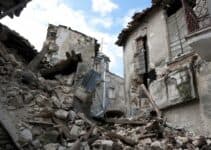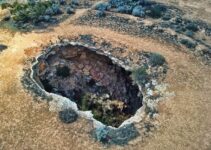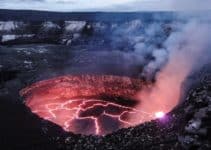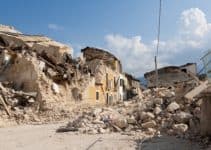Tsunamis have become popular only in recent times, but they have been existing and have caused damages for ages. Tsunami is one of the most dangerous disasters caused by the ocean and can have far-reaching consequences like washing out the entire city, taking years to recover and rebuild human civilization. Here are some simple tsunami tales to enlighten oneself about this havoc creating disaster.
What is a Tsunami?
A Tsunami is not just a single wave, but a series of ocean waves called a wave train caused by an underwater earthquake, by a volcanic eruption, landslide, rapid changes in atmospheric pressure, or a meteorite.
Incredible Tsunami Facts
Fact 1: An underwater earthquake, a volcano eruption or a landslide mostly causes a tsunami.
Fact 2: Only on very few occasions a tsunami is caused by a giant meteor in the ocean.
Fact 3: Tsunami waves can be as huge as 100 feet.
Fact 4: About 80% of the tsunamis occur in the Pacific Ocean’s Ring of Fire.
Fact 5: Tsunami is a term specific to Japan, which literally means a harbor wave (tsu = harbor + nami = wave) reflecting Japan’s tsunami-prone history.
Fact 6: Tsunami is also commonly known as killer waves.
Fact 7: The first wave of a tsunami is usually not the strongest; successive waves get bigger and stronger.
Fact 8: Tsunamis have great erosion potential, stripping beaches of sand that may have taken years to accumulate and undermining trees and other coastal vegetation. It is capable of inundating, or flooding, hundreds of meters inland past the typical high-water level.
Fact 9: The fast-moving water associated with the inundating tsunami can crush homes and other structures in the coastal area. Tsunamis may reach a maximum vertical height onshore above sea level, often called a run-up height, of tens of meters.
Fact 10: The tsunami that occurred at 0758 local time on 26 December 2004 (0058 GMT) in the Indian Ocean is known to be the most powerful earthquake that has occurred to date.
Fact 11: The Indian Ocean tsunami of 2004 had an epicenter of 9.0 magnitude(“megathrust”)on the Richter scale.
Fact 12: The Indian Ocean tsunami of 2004 hit 14 countries from Thailand to Africa, killing around 250000 people.
Fact 13: Number of people injured in the 2004 Indian Ocean tsunami was over 500,000, and potential additional deaths from infectious diseases were 150,000. Up to 5 million people lost homes or access to food and water, and 1.5 million have been wounded, displaced or lost families. One million people left without the means to make a living.
Fact 14: The majority of people who died in the 2004 Indian Ocean tsunami were women and children. Around a third of the dead were children.
Fact 15: The Indian Ocean tsunami that took place in December 2004 was estimated to have energy of 23,000 atom bombs.
Fact 16: During the Indian Ocean tsunami of December 26th 2004, the Jason satellite altimeter happened to be in the right place at the right time. As some satellites only pass over a particular location about once a month, so it’s about luck to spot a tsunami since they travel so quickly.
Fact 17: Tsunamis are the most common in Japan, and off-late they have been spreading across many other countries.
Fact 18: The length of a tsunami can be as long as 100 kilometers, and the distances of a continually occurring tsunami can be as far as 1 hour.
Fact 19: Scientists believe that in the year 1700, a tsunami of magnitude 9 occurred in the Pacific Ocean in the northwest and caused massive flooding and damage in Japan.
Fact 20: Tsunamis can travel as fast as 5000 miles per hour without being noticed and can cross the entire ocean in less than a day.
Fact 21: A Tsunami can be even less than 30 centimeters in height and can pass off unnoticed.
Fact 22: Tsunami waves get stronger as they succeed, and not usually, the first hit is that impactful as the succeeding ones.
Fact 23: Tsunamis can travel up to the speed of 500- 800 kilometers per hour almost as fast as a jet plane.
Fact 24: Once they reach the coast, they can have devastating impacts on the community. Successive crests can arrive at intervals of every 10 to 45 minutes and wreak destruction for several hours.
Fact 25: The Indian Ocean tsunami waves have always been 30 feet and above.
Fact 26: Flooding caused by tsunami on the mainland can be more than a thousand feet.
Fact 27: The places with the greatest risk of tsunami are Washington, Oregon, Hawaii, Alaska and California.
Fact 28: One should not swim in the tsunami water as the current is always pulling the person in the opposite direction.
Fact 29: Tsunamis are always high on energy and can travel miles across any ocean.
Fact 30: A tsunami is a series of waves, usually referred to as a wave train. So its destructive force may be compounded as successive waves reach the shore.
Fact 31: People experiencing a tsunami should remember that the danger may not have passed with the first wave and should await the official announcement that it is safe to return to vulnerable locations.
Fact 32: Thucydides, a Greek historian in his book History of Peloponnesian War, was the first who associated the term tsunamis with underwater earthquakes.
Fact 33: Deep in the ocean, tsunamis are only 1-3 feet tall, and the passers may not even be aware of the occurring tsunami under the water.
Fact 34: People who live in coastal areas, upon experiencing extremely strong earthquakes, should be aware that a tsunami is likely to occur.
Fact 35: Many scientists believe that a tsunami created by a meteorite had occurred on earth 3.5 billion years back.
Fact 36: Palm trees with strong trunks are planted onshore as they are known to survive a tsunami.
Fact 37: A mega tsunami has very huge waves and has occurred in Alaska in 1958. Surprisingly only two people died.
Fact 38: Scientists predict that the next mega tsunami will occur in Canary island and will cause damage up to American coastal cities like Boston, Miami and New York with waves as high as 100 feet.
Fact 39: A tsunami that occurred in Lisbon in 1755 killed 90,000 residents within minutes.
Fact 40: The costliest tsunami occurred in the U.S. and Canada in 1964. The damage was as huge as $106 million.
Fact 41: Tsunami can poison the mainland with a lot of salt, causing people to die out of hunger and disease after the tsunami is gone.
Fact 42: In the last 2,000 years, 50,000 people have died due to a tsunami in the Pacific Ocean.
Fact 43: Hawaii in the U.S. is at a greater risk for a Tsunami. Hawaii gets about one Tsunami every year and damaging one every seven years.
Fact 44: The biggest tsunami that occurred in Hawaii happened in 1946 when the coast of Hilo Island was hit with 30 ft waves at 500 mph.
Fact 45: The 2011 Japan Tsunami is believed to be world’s most expensive disaster in history.
Fact 46: The city of Sendai, Japan, is recognized as a model for urban resilience for its recovery from the earthquake and Tsunami of 2011.
Fact 47: Tsunamis can travel across oceans as they retain their energy with limited energy loss.
Fact 48: When stuck in Tsunami, it is recommended to grab a floating object and allow the current to carry you.
Fact 49: More than 700 million people live in low-lying coastal areas and Small Island Developing States exposed to extreme sea-level events, including tsunamis.
Fact 50: The best defense against any tsunami is resilient infrastructure, early warning systems that allow people to seek higher ground, and education is critical to saving people and protecting their assets against tsunami risk in the future.
Fact 51: Scientists can estimate an almost accurate time as to when and which part is tsunami most likely to occur. Their estimation is based on calculations like depth of water, time of the earthquake, distance from place to place etc.
Fact 52: The Pacific Tsunami Warning System, a coalition of 26 nations headquartered in Hawaii, maintains a web of seismic equipment and water level gauges to identify tsunamis at sea. Similar systems are proposed to protect coastal areas worldwide.
Fact 53: In 1995, the National Oceanic and Atmospheric Administration (NOAA) began developing the Deep-ocean Assessment and Reporting of Tsunamis (DART) system. An array of stations is currently deployed in the Pacific Ocean. These stations give detailed information about tsunamis while they are still far offshore. Each station consists of a sea-bed bottom pressure recorder which detects the passage of a tsunami.
References:
